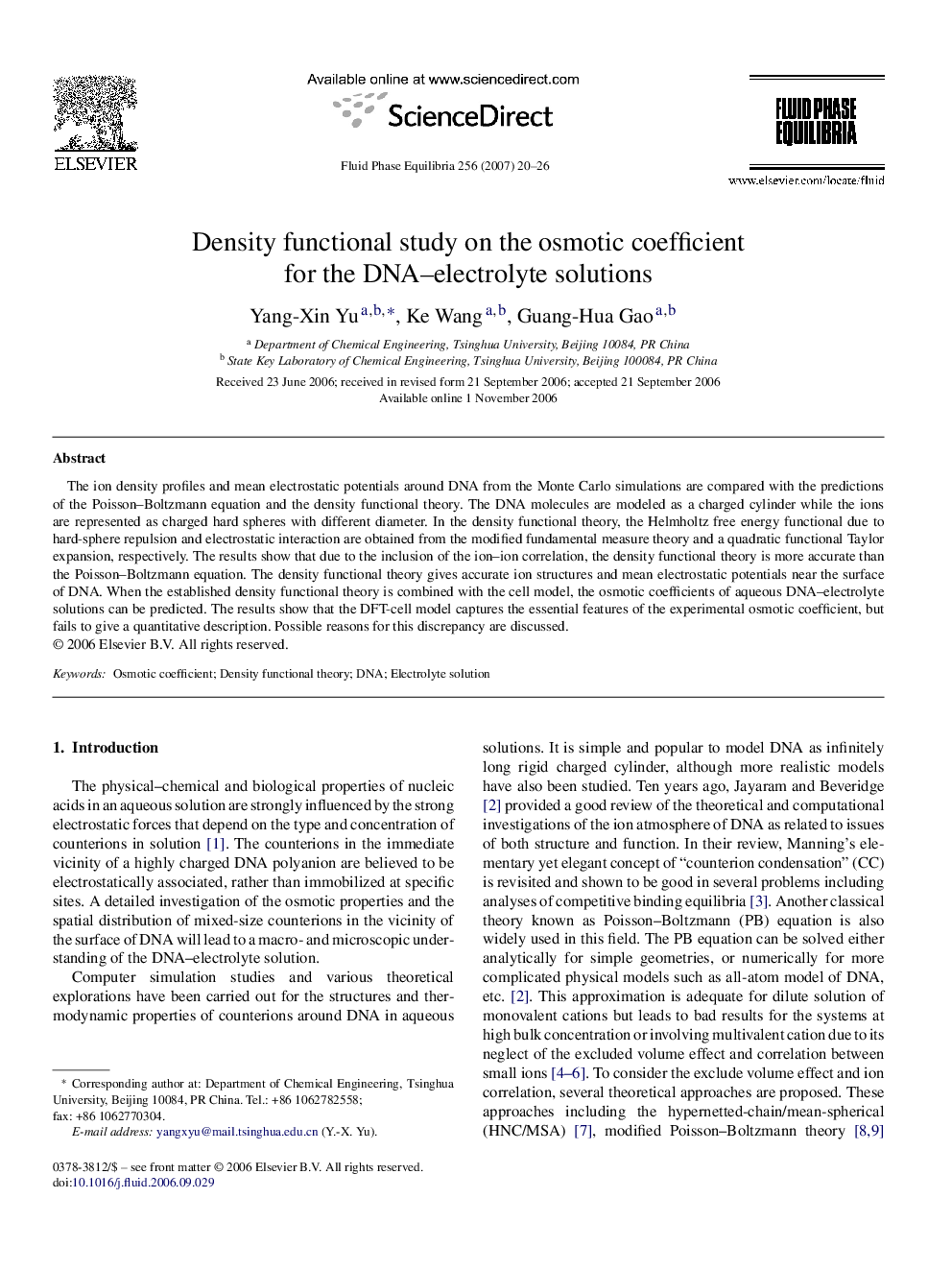| Article ID | Journal | Published Year | Pages | File Type |
|---|---|---|---|---|
| 203974 | Fluid Phase Equilibria | 2007 | 7 Pages |
The ion density profiles and mean electrostatic potentials around DNA from the Monte Carlo simulations are compared with the predictions of the Poisson–Boltzmann equation and the density functional theory. The DNA molecules are modeled as a charged cylinder while the ions are represented as charged hard spheres with different diameter. In the density functional theory, the Helmholtz free energy functional due to hard-sphere repulsion and electrostatic interaction are obtained from the modified fundamental measure theory and a quadratic functional Taylor expansion, respectively. The results show that due to the inclusion of the ion–ion correlation, the density functional theory is more accurate than the Poisson–Boltzmann equation. The density functional theory gives accurate ion structures and mean electrostatic potentials near the surface of DNA. When the established density functional theory is combined with the cell model, the osmotic coefficients of aqueous DNA–electrolyte solutions can be predicted. The results show that the DFT-cell model captures the essential features of the experimental osmotic coefficient, but fails to give a quantitative description. Possible reasons for this discrepancy are discussed.
